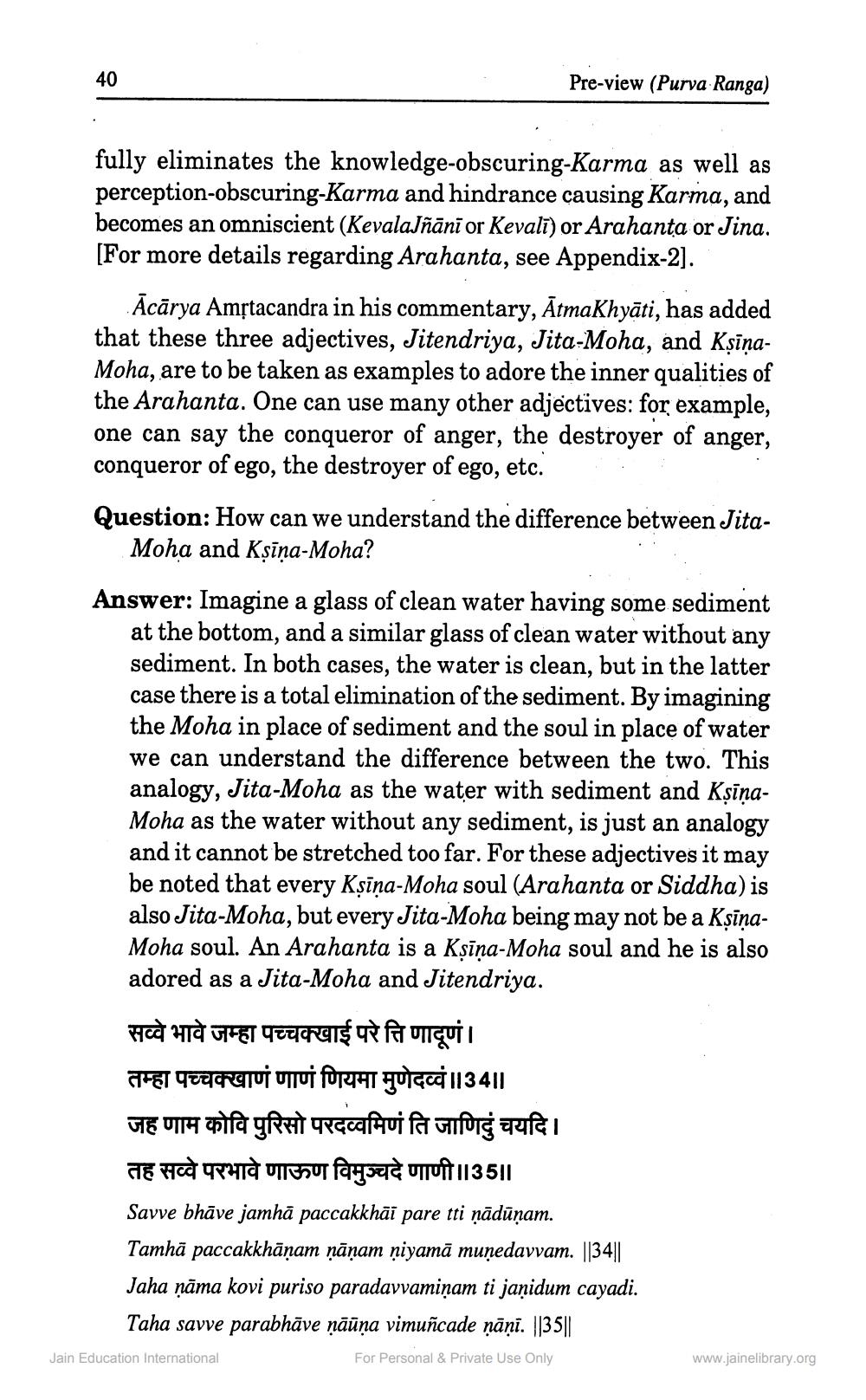________________
Pre-view (Purva Ranga)
fully eliminates the knowledge-obscuring-Karma as well as perception-obscuring-Karma and hindrance causing Karma, and becomes an omniscient (Kevalajñānī or Kevalī) or Arahanta or Jina. [For more details regarding Arahanta, see Appendix-2].
Ācārya Amộtacandra in his commentary, Ātmakhyāti, has added that these three adjectives, Jitendriya, Jita-Moha, and KșīņaMoha, are to be taken as examples to adore the inner qualities of the Arahanta. One can use many other adjectives: for example, one can say the conqueror of anger, the destroyer of anger, conqueror of ego, the destroyer of ego, etc. Question: How can we understand the difference between Jita
Moha and Kșīņa-Moha?
Answer: Imagine a glass of clean water having some sediment
at the bottom, and a similar glass of clean water without any sediment. In both cases, the water is clean, but in the latter case there is a total elimination of the sediment. By imagining the Moha in place of sediment and the soul in place of water we can understand the difference between the two. This analogy, Jita-Moha as the water with sediment and KșīņaMoha as the water without any sediment, is just an analogy and it cannot be stretched too far. For these adjectives it may be noted that every Kșīņa-Moha soul (Arahanta or Siddha) is also Jita-Moha, but every Jita-Moha being may not be a KșīņaMoha soul. An Arahanta is a Kșīņa-Moha soul and he is also adored as a Jita-Moha and Jitendriya. सव्वे भावे जम्हा पच्चक्खाई परे त्ति णादणं। तम्हा पच्चक्खाणंणाणं णियमा मुणेदव्वं॥34|| जह णाम कोवि पुरिसो परदव्वमिणं ति जाणिदुं चयदि। तह सव्वे परभावे णाऊण विमुञ्चदे णाणी॥35॥ Savve bhāve jamhā paccakkhāi pare tti ņādūņam. Tamhā paccakkhāņam ņāņam ņiyamā muñedavvam. ||34||| Jaha ņāma kovi puriso paradavvamiņam ti jaạidum cayadi. Taha savve parabhāve ņāūņa vimuñcade ņāņi. ||35||
For Personal & Private Use Only
Jain Education International
www.jainelibrary.org




